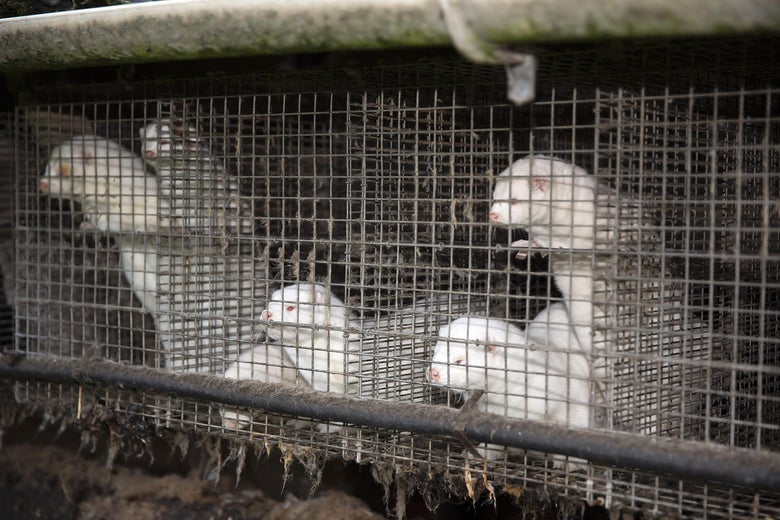You are here
ADDITIONAL REPORTING: How a Coronavirus Mutation in Minks Could Wreak Havoc on Vaccine Development
Primary tabs
 How a Coronavirus Mutation in Minks Could Wreak Havoc on Vaccine Development A new strain of SARS-CoV-2 in Danish minks is raising fears among public health experts. Slate Magazine
How a Coronavirus Mutation in Minks Could Wreak Havoc on Vaccine Development A new strain of SARS-CoV-2 in Danish minks is raising fears among public health experts. Slate Magazine Officials in Denmark announced Wednesday that they would be euthanizing every last mink in the country’s fur farms, some 17 million animals. The news came after a discovery by Danish scientists that SARS-CoV-2, the official name for the virus that causes COVID-19, had mutated in captive minks, producing a strain of the coronavirus that is not readily stopped by antibodies to the dominant strain of the virus. More troublingly, this new strain is still transmissible from minks to humans, raising dire concerns about the efficacy of vaccines currently in development worldwide.
There are currently five reported cases of the new strain in minks and 12 cases in humans, all workers at one of the roughly 1,100 mink farms in Denmark. Although the humans are being monitored, isolated, and treated in keeping with recommendations from public health officials, the minks are not so lucky—mass extermination is already underway. More than 400 mink farms have already culled the entirety of their mink populations, likely by gassing them. Police and military personnel are being deployed to destroy all minks on the remaining farms as soon as possible. According to Finnish fur auctioneer Magnus Ljung, pelts from minks near infected farms are unfit for sale and will be destroyed, almost half the total count. The remaining pelts will be sold as less valuable summer pelts. All told, extermination of the minks will cost an estimated $785 million.
Since the beginning of the pandemic, more than 50 animal species have tested positive for the dominant strain of SARS-CoV-2. When news broke in April that several domestic dogs and cats had tested positive, there were no calls for mass euthanasia of house pets. Spread to wild animals—tigers, bats, and great apes to name a few—has also been documented, but at no point did epidemiologists recommend such dramatic intervention to stop the spread in those species, several of which are endangered. The case of the Danish minks, however, is different. Other animal species that have caught the coronavirus from people were infected with the dominant strain of the virus, the one that’s been making headlines for the better part of the past year. Additionally, most of those species turned out to be dead-end hosts for the virus, meaning that although the virus could infect those animals, and even cause disease in those animals, the virus was unable to turn around and jump from animal to human, a phenomenon called zoonosis.
Minks are an exception to this rule. The European mink industry has been battling outbreaks of the dominant strain of COVID on farms since June, after a rash of COVID-19 cases in people in northern Denmark was ultimately traced back to those farms. Once it became clear that the animals themselves were the source of the infections, minks were slaughtered en masse on farms where these outbreaks had taken place. The Netherlands culled more than 10,000 after coronavirus outbreaks this summer. Officials in Spain slaughtered almost 10 times as many after an outbreak occurred at a farm in the Aragón province. Those minks were contracting and spreading the dominant strain of the coronavirus, the one we all know and dread.
The development this week is the discovery that minks in Denmark are now testing positive for a mutant strain of the virus that is not readily destroyed by COVID antibodies. Experts warn that if the outbreak of this mutant strain is not sufficiently contained, the world could be facing a second pandemic. ...
Also see: https://news.yahoo.com/six-countries-reported-coronavirus-mink-101816139.html



Recent Comments